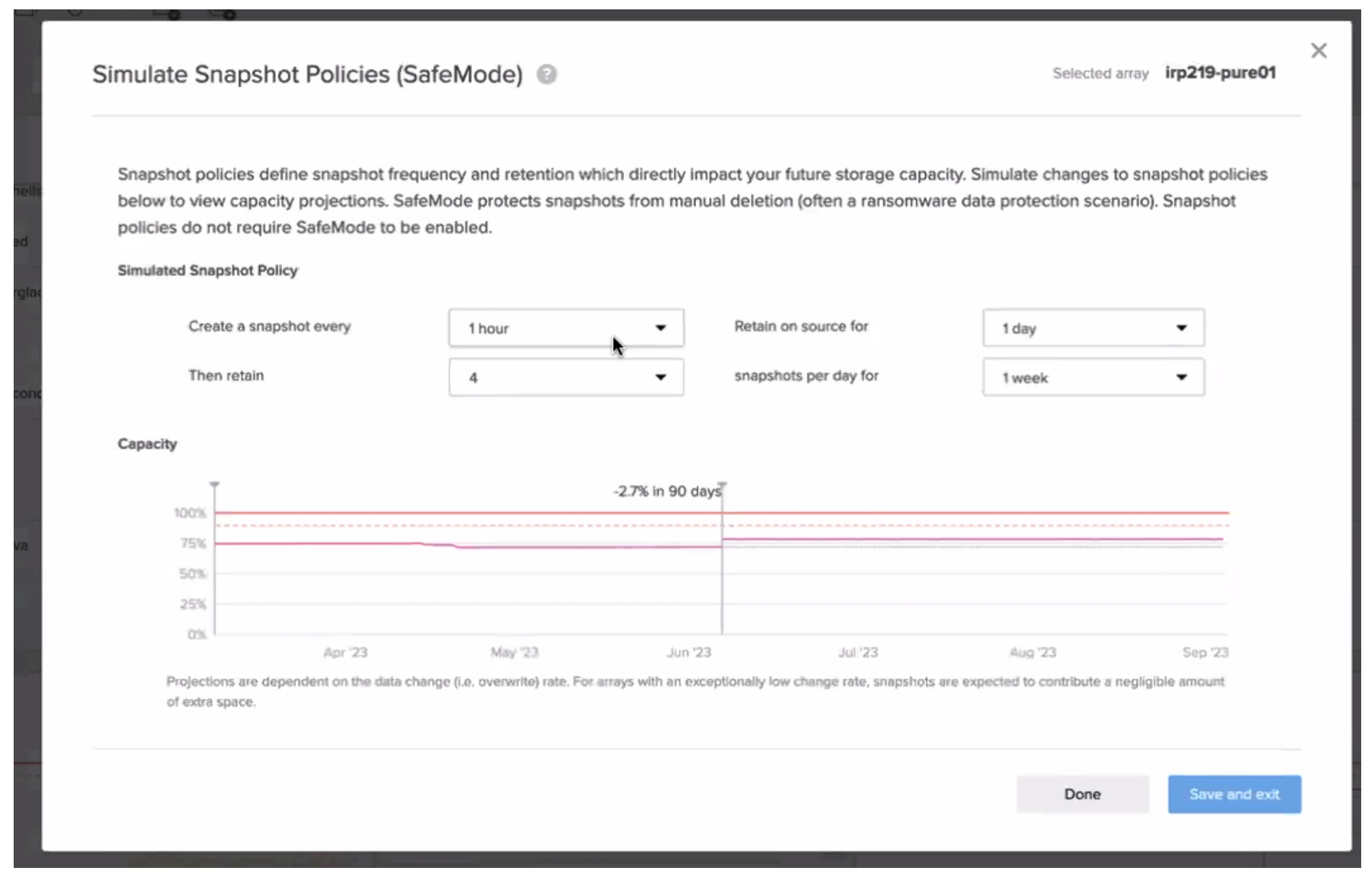In November, Pure Storage gave a presentation at the Storage Field Day event (where I was a delegate) on the efficiency and ease of their Evergreen subscription-based services. The presentation focused on the power and cooling savings available, and explained how in-place upgrade eliminates the need for a managed migration of data.
There’s a lot of material out there about Pure’s array offerings and supporting software services, but I wasn’t familiar with how these could be wrapped up in an Evergreen subscription, primarily aimed at setting up and evolving cloud-like services within an organization.
Storage Subscription Methods
The point of Pure’s Evergreen subscriptions is to provide the ability to update storage as new features and capabilities become available. Pure’s slogan for this is “Modernize as you go.” Another reason to look at subscription models is to have a growth roadmap that matches the organization. Whether an organization has a 3-year infrastructure budget or a pay-as-you-go model, the subscription models are designed to keep on top of changes.
Evergreen subscriptions can be consumed in several different ways. The original subscription was Evergreen//Forever, first released as Evergreen Gold. In this model, arrays and software are purchased as a unit, with the subscription providing upgrades to newer software and controllers as they become available. Users can add capacity to Evergreen//Forever any time.
The entirely cloud-based subscription is Evergreen//One, previously sold as Pure-as-a-Service. In this offering , all hardware and configurations are owned by Pure and are delivered as Storage-as-a-Service to the customer. In contrast with Evergreen//Forever, which offers organizations traditional appliance ownership with a subscription to software, ever-modern hardware, and customer support, Evergreen//One is entirely subscription-based, with Pure taking on the responsibility of delivering storage where it is required, offering on-demand storage service with the flexibility of on-premises deployment. This provides both ends of the spectrum, depending on an organization’s needs and how their business is structured.

Evergreen//Flex
Their newest subscription-based model is Evergreen//Flex, intended as a middle ground combining the best of both worlds. Evergreen//Flex is aimed at customers who want or need to own their own hardware, but like the ability to consume as they go.
The idea is that an organization determines how many array instances they need and then buy that hardware at a discounted rate. The subscription rate is based on the amount of storage used. Capacity and additional controllers can be added as needed, and is covered by the subscription.
The Evergreen//Flex subscription has a minimum 36-month term and requires 30% reserve capacity. The amount of storage used is aggregated across the entire Evergreen forest. (Pure uses the term “fleet-wide.” In any case, all arrays are covered by the subscription). This means some arrays (like those for file services) can run below the 30% reserve, while other systems used (for say test and dev) might run well above—all while not incurring overage penalties at the individual array level.
Pure measures the daily capacity usage and generates monthly recurring bills. This is normally done through Pure’s phone-home capability in the arrays. For dark sites or places that don’t use phone-home capabilities, a built-in report generator allows the customer to report usage to Pure.
As Flexible as a Pine Bough
Evergreen//Flex provides some flexibility in a few ways. First, it allows capacity to be moved from one array to another, as needed. This allows individual arrays to be built or torn down based on seasonal or ephemeral needs. And capacity that is no longer needed isn’t left stranded in an underused array.
Secondly, it allows organizations to own their own equipment but only pay for the capacity they use. This comes in handy when there are individual projects that demand their own systems, but don’t need the entire capacity of an array. In this way, the organization can get the several arrays it needs, but only ends up paying for one array’s worth of capacity.
Finally, Evergreen//Flex provides the flexibility to have the storage reserve needed for occasional spikes, but not pay for it when it’s not in use. This means transient workloads can be run when they come up without the up-front expenditure to provision for them.
Why Should We Care?
The Evergreen//Flex model is designed to work for a variety of organizations.

If an organization needs the capabilities of an all-flash array, but not necessarily the full capacity of it, subscribing only for the capacity used keeps costs down. Service providers, asset-heavy companies and regulated environments often have requirements for on-premises owned equipment that can’t be provided “as-a-service.” At the same time, cloud-like provisioning and not having to pay for stranded capacity keeps Evergreen//Flex economical.
Service providers can avoid paying for capacity when their users aren’t buying it. Asset-heavy companies get depreciable assets on the books and the ability to run their own private clouds. Regulated industries and agencies can securely maintain their own data, and don’t even need a phone-home capability. And in each case, the Evergreen program provides a Customer Success Engineer to make the best of the //Flex experience.
If this is interesting to you, you can find out a lot more about Pure Storage’s Evergreen/Flex subscription from their website.




